Planetarium centenary
This month we celebrate the centenary of the planetarium.
In May 1925, the first star theatre opened its doors at the Deutsches Museum in Munich.
In this blog we’ll trace one hundred years of planetaria.

Zeiss model 1 planetarium projector, Deutsches Museum: Zeiss Archive
What is a planetarium?
A planetarium is a star theatre.
Inside the theatre, the night sky is projected on to a dome.
The shows are a unique, vivid and entertaining way to explore the universe.
Planetarium history
The idea began in Germany, at the Deutches Museum in Munich.
The director, Oskar von Miller, wanted to recreate the starry sky in the museum.
World War 1 interrupted progress but it was taken up again in 1920.
Walter Bauersfeld of Carl Zeiss had the task of making the idea into reality.

Walter Bauersfeld and his projector design: Zeiss Archive
The projector was actually a collection of projectors mounted on a cage.
It created stars, planets and the Milky Way.
Motorised drives simulated the movement of stars and planets.
This artificial sky was projected on to the dome interior.

Zeiss mark 1 projector: Zeiss archive
Zeiss built the prototype planetarium at their factory in Jena.
The projector was moved to the Deutches Museum when their dome had been completed.
It opened to the public on May 7th, 1925.
It projected over 4,000 stars onto a 15-metre dome.
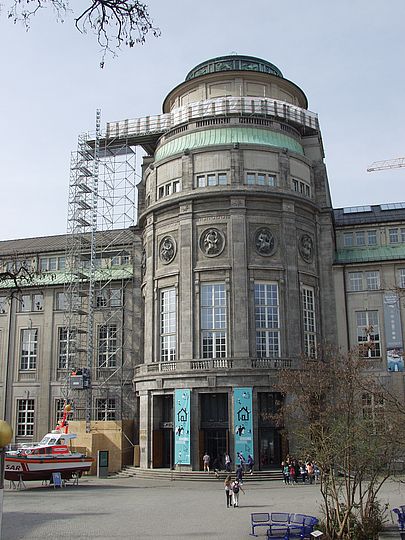
Deutches Museum, Munich. Photo: Deutches Museum
The planetarium was an immediate hit with the public.
They flocked in their thousands to see ‘The Miracle of Jena’.
Planetaria all over the world
Zeiss quickly had more buyers for their invention.
They built their own in Jena, then others in Rome and Vienna.
Japan opened its first in Osaka in 1930.
Chicago saw the first American planetarium in the same year.

Adler Planetarium, Chicago. Photo: Adler Planetarium
In Britain, we had to wait until 1958, when the London Planetarium opened.
It was part of Madame Tussauds, immediatey recognised by its green dome.
The dome was over 18 metres across and had 330 seats.
You can read more about London Planetarium in a previous blog, The First Planetarium.

London Planetarium, Madame Tussauds. Photo: London Planetarium
In the 1950s and 60s the USA and Russia engaged in the ‘Space Race’.
Public interest in space gave planetaria a boost.
They began to appear in cities throughout the world.
Now there are over 4,000 planetaria world wide.
You can see a map on the International Planetarium Society website.
Planetarium projectors
Zeiss instruments were spherical starballs holding a number of smaller projectors.
Each projector has its own lamp and lens to create star and planet images.
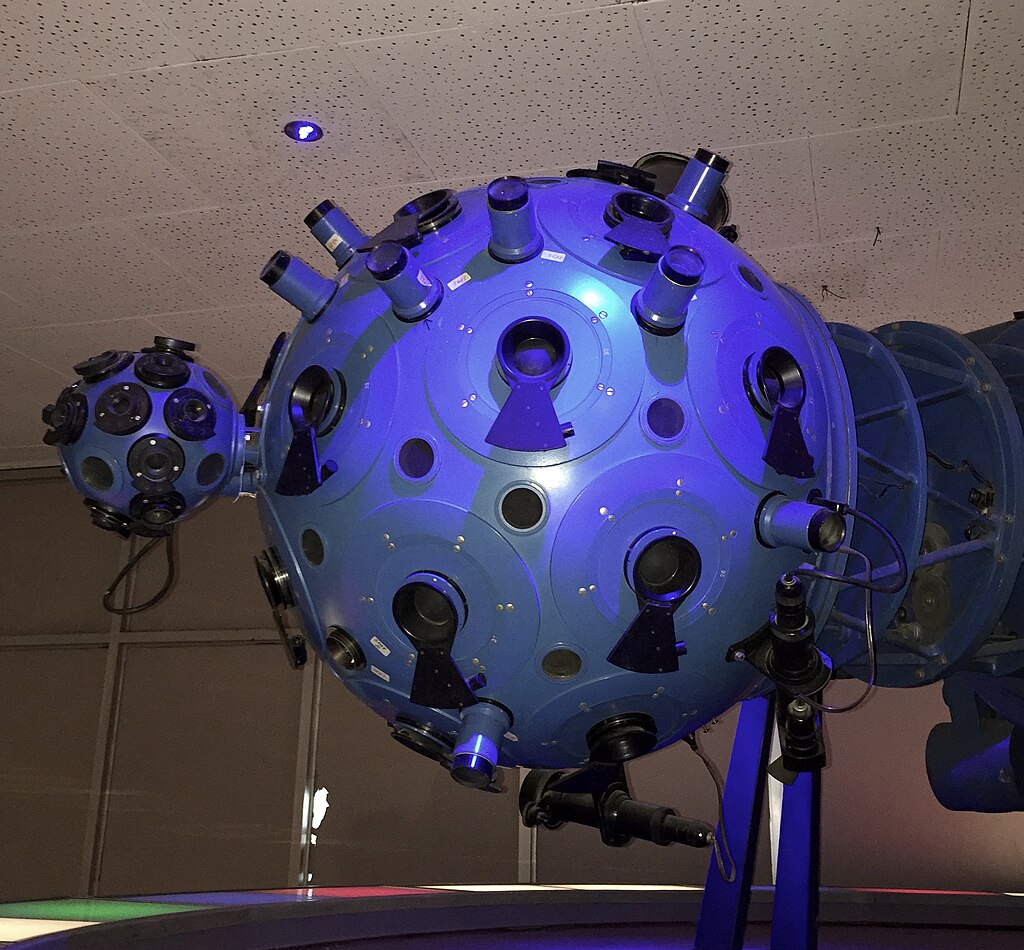
Zeiss Mark 4 projector at London Planetarium. Photo: London Planetarium.
I worked with a wonderful Zeiss projector at Yorkshire Planetarium.
When the house lights dimmed, the Zeiss created a magnificent starry night.
It was as though someone had removed the roof to expose a perfect night sky.

Dennis with the Zeiss ZPK4 projector at Yorkshire Planetarium. Photo: D. Ashton.
Other companies began to produce projectors in the 1960s.
Armand Spitz in the USA sought to make a more affordable instrument.
His first Spitz A1 projector had a 12-sided head.
These flat panels were cheaper and easier to manufacture than the spherical starball.

Spitz A1 projector: Planetarium Projector Museum.
Later models used a spherical starball and showed over 1,000 stars, planets and Moon phases.

Spitz A3 projector.
Spitz remains a leading planetarium company to this day.
In the 1960s, the Japanese company Goto entered the planetarium market.
Their E3 and E5 projectors were placed in every primary school in Japan.
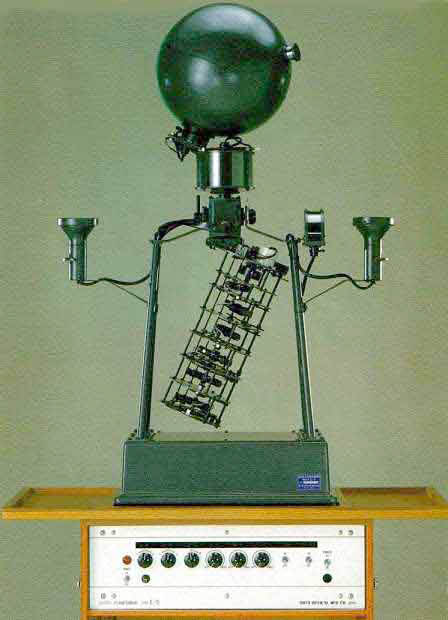
Goto E3 projector.
All these are optical projectors.
They create a starry sky through bright lamps and lenses for stars and planets.
Images of things like nebulae, galaxies were shown using a slide projector.
But the 1980s saw the beginning of change.
The digital projector was about to revolutionise planetarium shows.
Digital Planetaria
The change from optical to digital began in the 1980s.
It was the beginning of a revolution in planetarium shows.
In 1983, American company Evans and Sutherland unveiled Digistar 1.
This computer-controlled projector used a cathode ray tube to create star images.
The electronics could also make wire-frame images.
They joined stars dot-to-dot to make constellation shapes.

East Florida State College Planetarium. Photo: EFSC
I saw Digistar in action at a planetarium in Brevard, Florida in the 1990s.
I wasn’t impressed by the starfields.
All the stars were greenish in colour, a product of the cathode ray technology.
But the wire-frame imagery hinted at the promise of digital projection.
I had witnessed the start of a new era in planetarium evolution.
Modern planetaria
The planetarium began by projecting the night sky on to a dome.
The planetarium projector was an optical instrument.
A complex one but limited in its display.
The modern digital planetarium explores the whole universe.
Computers linked to digital projectors depict the cosmos through all-round video.

Digital projection in Wonderdome. Photo: Wonderdome
Now we can journey through the planets of the Solar System.
We can take a trip into deep space, we can travel to the stars.
Planetaria are now 360 degrees movie theatres.
My first experience of a movie-based show was some years ago at the Gates Planetarium in Denver, Colorado.
The show took the audience on a journey through the Milky Way and into a black hole.
It was a mind-blowing experience.
Like the rest of the audience, I could appreciate the new power of the planetarium.

Gates Planetarium, Denver Museumof Nature and Science. Credit: DMNC.
Now big fixed planetaria boast an integrated group of high-resolution projectors.
Film producers create shows from cartoons to CGI and AI depictions of space.

East Florida State College Planetarium, Florida. Photo: EFSC
The Planetarium I visited in Brevard is the East Florida State College Planetarium.
Now they have the best of both worlds.
Their projector is a Digistar 7 projector which shows the universe in wonderful HD video.
They also use a Minolta Infinium projector to display the starry sky.
And the all-round theatre is no longer just the province of astronomy.
A popular current show takes us to the era of the dinosaurs.
We can now travel in time to different eras and view historical events.
We can journey to remote corners of our world seated in comfort in our local star theatre.
In modern parlance, the planetarium is an immersive experience.
Planetarium design
Planetarium buildings have changed too.
In the past, reclining seats enabled the audience to gaze at the night sky without too much neck strain.
In modern planetaria, the seating slopes upwards and the dome is tilted.
This is the optimum design for the immersive star theatre.

Peter Harrison Planetarium, Royal Observatory, Greenwich, London. Photo: RMG
Planetaria: the future
In most planetaria, the dome is still a reflective surface.
Stars and video are projected on to the dome.
But technology has already taken the next step forward.
At the recent British Association of Planetaria conference I saw a hint of the next giant leap.
There is a star theatre which no longer uses projectors, not a single one.
Instead the whole dome is an active LED screen.
RSA Cosmos opened two LED-domed planetaria in Japan in 2021.
In 2024, Europe received its first LED-dome planetarium in Prague.
The company this time is Cosm Technology,
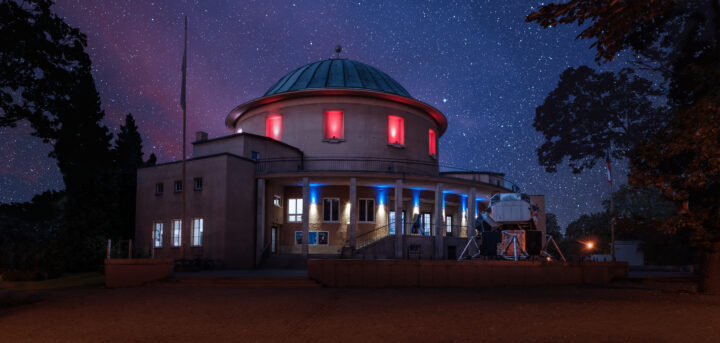
Prague Planetarium. Photo: Cosm Technology
The LED dome acts as a giant, high resolution TV screen.
It’s the same technology as the new Sphere in Las Vegas.
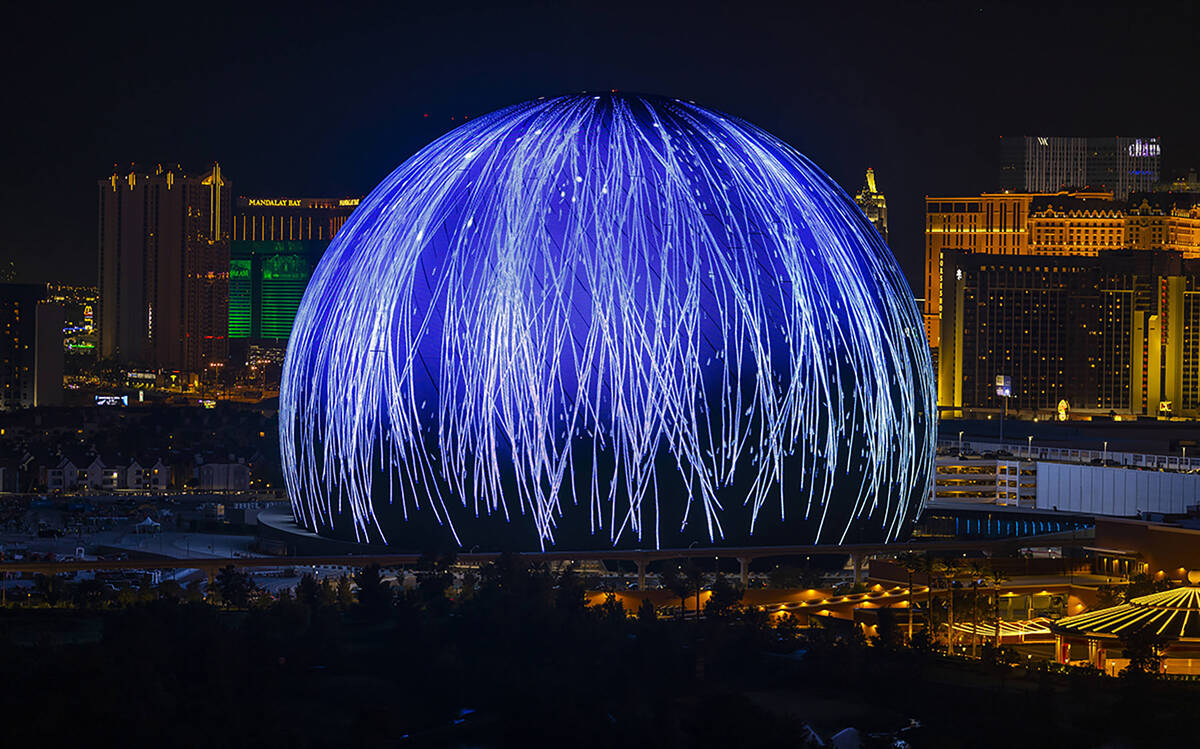
The Sphere, Las Vegas. Credit: Las Vegas Review-Journal
The Sphere has an outer LED screen lighting the outside of the building.
In LED Planetaria it’s the interior that creates the all-round immersive experience.

Prague Planetarium. Photo: Cosm Technology
It is fitting that in this centenary year we can welcome a new concept in the planetarium.
The next one hundred years has begun in spectacular fashion.
Who knows what the planetarium will be like in 2125?
Mobile Planetaria.
Alongside the fixed star theatres, planetaria have evolved a portable version.
Wonderdome is an example of a mobile planetarium.

Mobile inflatable planetarium, Wonderdome
I was lucky enough to be at the forefront of the mobile planetarium movement in the UK.
In my next blog, I’ll trace the development of travelling astronomy shows.
Make a visit – or book us!
So this month is an ideal time to visit a planetarium.
You can find the nearest fixed star theatre on the British Association of Planetaria website.
Or, if you are in a school or you have an event coming up, why not book Wonderdome?
We would love to see you under the stars!

The author: Dennis Ashton is a Fellow of the Royal Astronomical Society and a Wonderdome presenter.
In 2024, Dennis received the Special Contribution award from the British Association of Planetaria.
Wonderdome now has 14 presenters, making us the largest – and best – mobile planetarium organisation in the UK.
Would you like more Astronomy news?
Do you want to hear about our upcoming public events?
Follow Wonderdome Portable Planetarium on Twitter / X and Facebook.
Or you can go at our website wonderdome.co.uk.


